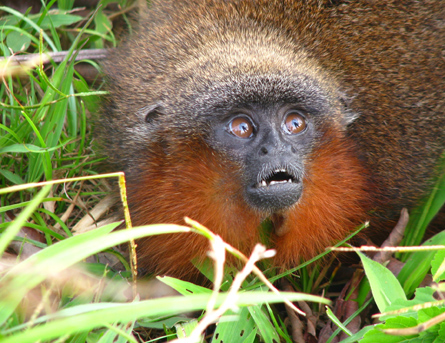After more than 30 years of speculation among Colombia’s biologists, unusual titi monkeys there have been confirmed as a distinct species new to science.

The cat-sized monkeys at last get their own scientific name, Callicebus caquetensis, in a description posted online August 12 in Primate Conservation.
Unlike neighboring titis, the population discovered in the Caquetá region lacks a white facial stripe and white hands, and has a bushy red beard, says primatologist Thomas Defler at the National University of Colombia in Bogotá. The Caquetá titis’ chromosomes also have structural differences compared with other titi species.
“It’s important that people know we’re still finding new monkeys,” Defler says. A handful of species have been named in South America alone during the past decade.
Primatologists have been curious about the Caquetá titis since at least 1976, when a biologist traveling through the region proposed that the titis there might deserve recognition as a distinct group, Defler says. But the titis’ home became an insurgent stronghold, and decades of political violence discouraged primatologists from venturing in to follow up.
Travel became less risky in the past several years, and Defler seized on a lucky chance. A student native to Caquetá, the son of a veterinarian well known in the area, arrived in Defler’s lab eager for a primatology project.
Starting in 2008, student Javier García traveled in search of titis. He has tracked down more than a dozen groups by listening for their morning calls. Garcia even brought back two Caquetá titis that had been kept as pets so that Defler and his colleagues could observe the species alive.
The downside of resolving years of speculation about the titi’s existence is that the population appears to be tiny and under threat. Garcia’s data so far suggest merely 250 individuals, and Defler does not expect there to be more than 500. What had been a forest species now lives in fragments of forest in a largely agricultural landscape. At the same time that the Caquetá titi gets its species status, Defler predicts it will also qualify as critically endangered.






